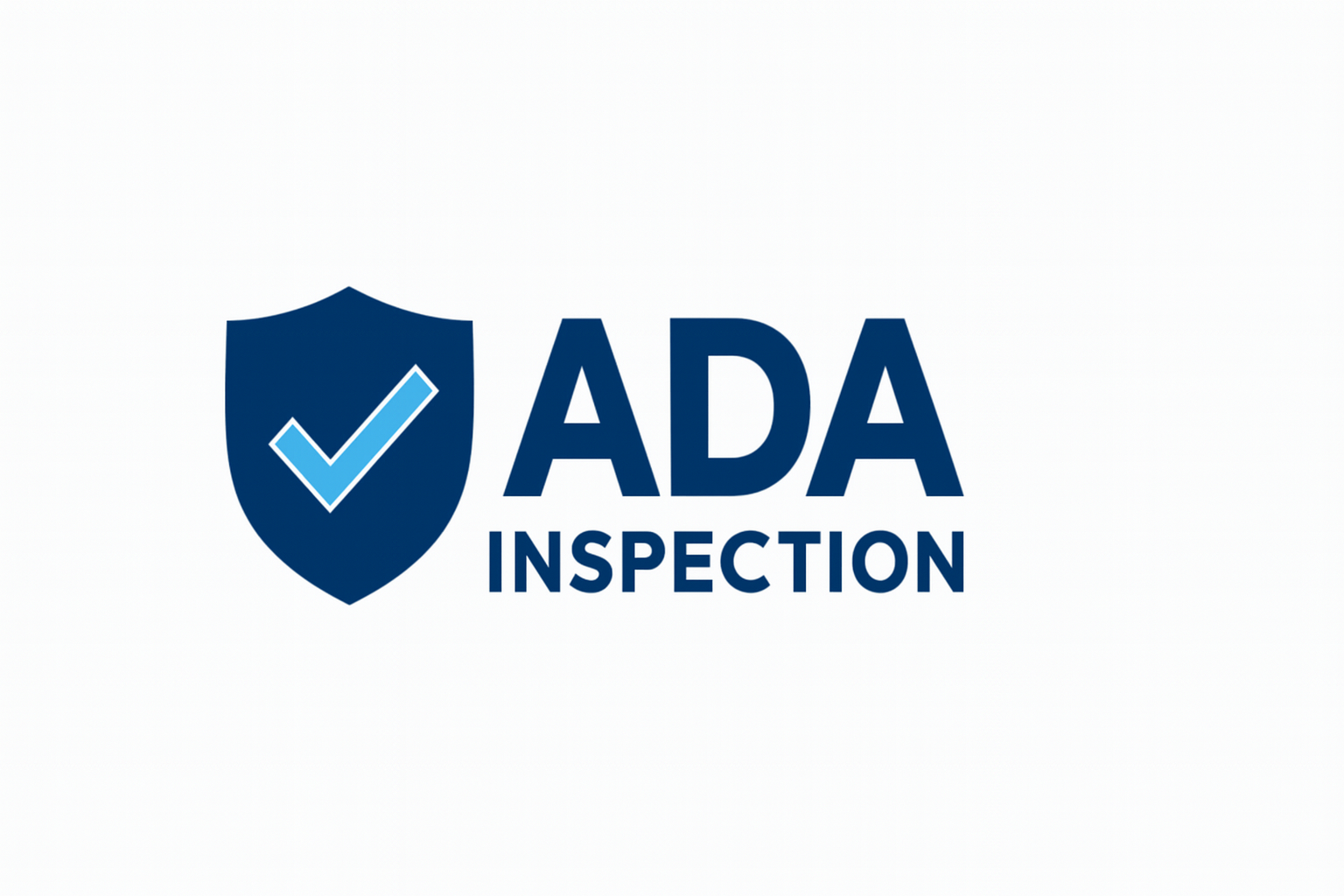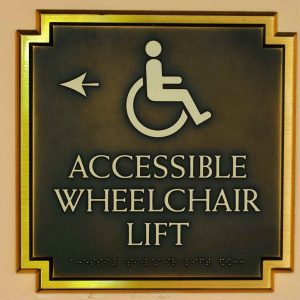Accessible parking signs are legally required under both the Americans with Disabilities Act (ADA) and California Title 24 building code. If your property offers parking to the public, that includes you. These signs must clearly identify accessible spaces with the correct language, symbols, placement, height, and visibility, or you risk non-compliance.
The reality? Many violations stem from small but costly mistakes like installing a sign too low, using the wrong font size, or omitting required wording. And in California, that can mean $4,000 statutory penalties per violation, plus legal fees, and possibly retrofitting orders.
This isn’t just about checking a box. It’s about avoiding lawsuits and ensuring your property is legally and safely accessible. This article breaks down exactly what’s required for parking signs in California from dimensions to installation height so you can fix problems before they become legal liabilities.
What Makes a Parking Sign ADA-Compliant in California?
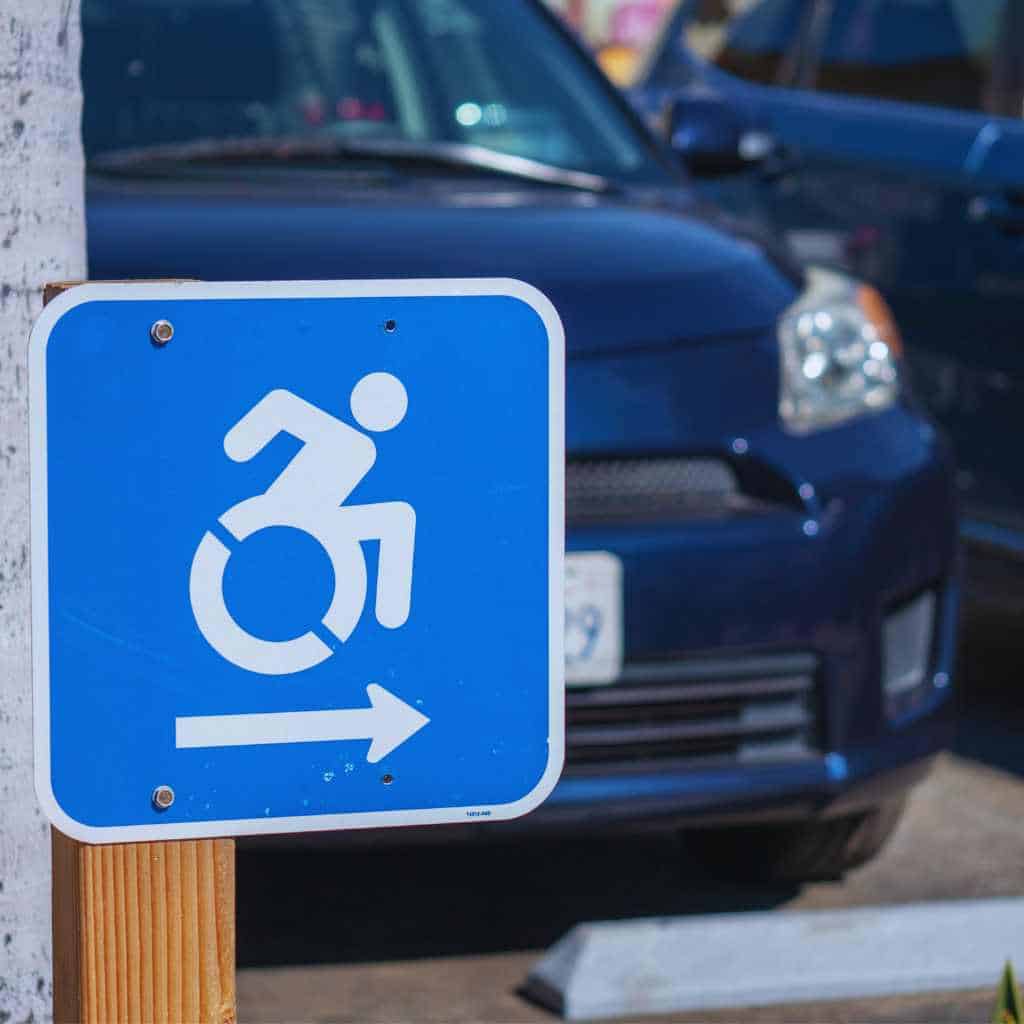
To meet accessibility laws in California, parking signage must follow both the federal ADA Standards for Accessible Design and California Building Code (CBC) Title 24. Here’s what that actually means for your property:
Minimum Height Requirement: The sign must be mounted no lower than 60 inches from the ground to the bottom of the sign when measured from the surface directly beneath it. If two signs are posted together (e.g. accessibility symbol + fine amount), the lowest edge of the lower sign must still be at least 60 inches high. This ensures the sign remains visible even when a vehicle is parked in front of it.
Required Language and Symbols: The International Symbol of Accessibility (ISA) — the blue-and-white wheelchair icon must be clearly displayed. Text such as “Van Accessible” is required on van spaces. Font must be clear, sans-serif, and high contrast against the background.
State-Specific Additions (California Title 24): Every accessible parking sign in California must also include the line “Minimum Fine $250”. This isn’t optional it’s written into the CBC. If this is missing, the sign is out of compliance.
Reflectivity and Contrast: Signs must use retroreflective materials so they remain legible at night or in low-light conditions. This applies especially to lots open after dark or in covered garages.
Bilingual Requirements: If a local ordinance or property policy mandates multilingual access, then English plus a second language (commonly Spanish) should be included. While not federally required, omitting translations in high-need areas may raise compliance concerns or expose owners to local civil rights challenges.
How tall does an ADA parking sign need to be in California?
60 inches minimum from ground level to the bottom of the sign. This applies even when two signs are mounted on the same post the lowest edge must still be five feet off the ground. If mounted on a sidewalk or curb, measure from the sidewalk level, not the adjacent road.
Do California ADA signs need to include the fine amount?
Yes. In California, all accessible parking signs must clearly state “Minimum Fine $250.” This requirement comes from CBC Title 24, Section 11B-502.6. If the sign doesn’t mention the fine, it fails inspection regardless of whether it meets ADA requirements at the federal level.
Where and How Should ADA Parking Signs Be Installed?
Required Sign Placement and Mounting Specs
In California, the sign must be mounted at least 60 inches above ground level measured to the bottom of the lowest sign. This height is measured from the grade or sidewalk surface, not the adjacent roadway.
The sign must be located at the front of the accessible parking stall and positioned in a way that it’s clearly visible to drivers entering the lot. It cannot be hidden behind landscaping, poles, or other vehicles. If the sign is placed on a post with other messages (like fine amounts or van access), the bottom of the lowest sign still needs to be 60 inches high.
Signs must be installed perpendicular to the parking stall, facing the driving aisle — not sideways or parallel to the curb.
You cannot obstruct the sign’s view with vegetation, fencing, or building structures. Visibility is critical. If the sign can’t be seen from a vehicle approaching the space, it’s out of compliance.
Distance from Accessible Pathways
The parking space must connect to an accessible route usually a curb ramp or access aisle that leads directly to the building or facility entrance.
The sign should be installed in a way that does not block or encroach upon the access aisle or wheelchair ramp. If placed too close, it may violate the accessible route clearance width or be considered a hazard.
Signs must face approach traffic, so drivers can see them before entering the stall especially important in angled or one-way lots.
Striping and Surface Marking Alignment
The posted sign does not replace surface markings. Accessible parking stalls in California must also be marked with:
The International Symbol of Accessibility painted on the ground (at least 36 inches tall)
Blue border striping
Cross-hatched access aisles with “NO PARKING” lettering
The sign and the surface markings must correspond. Don’t paint accessible symbols without posting the required signs or vice versa. Both are required for full compliance under Title 24 and federal ADA rules.
Where exactly should the sign go in angled parking lots?
At the head of the stall, facing the driving aisle. Follow the same 60-inch height rule. Do not mount the sign off to the side.
Can you mount ADA parking signs on fences?
Yes, if and only if the fence placement meets all visibility and height requirements. If mounting on a chain-link fence, make sure the sign remains flat, legible, and is not blocked by mesh or vegetation. Measure 60 inches from the pavement directly below the sign not from the base of the fence.
California-Specific ADA Signage Rules That Must Be Followed
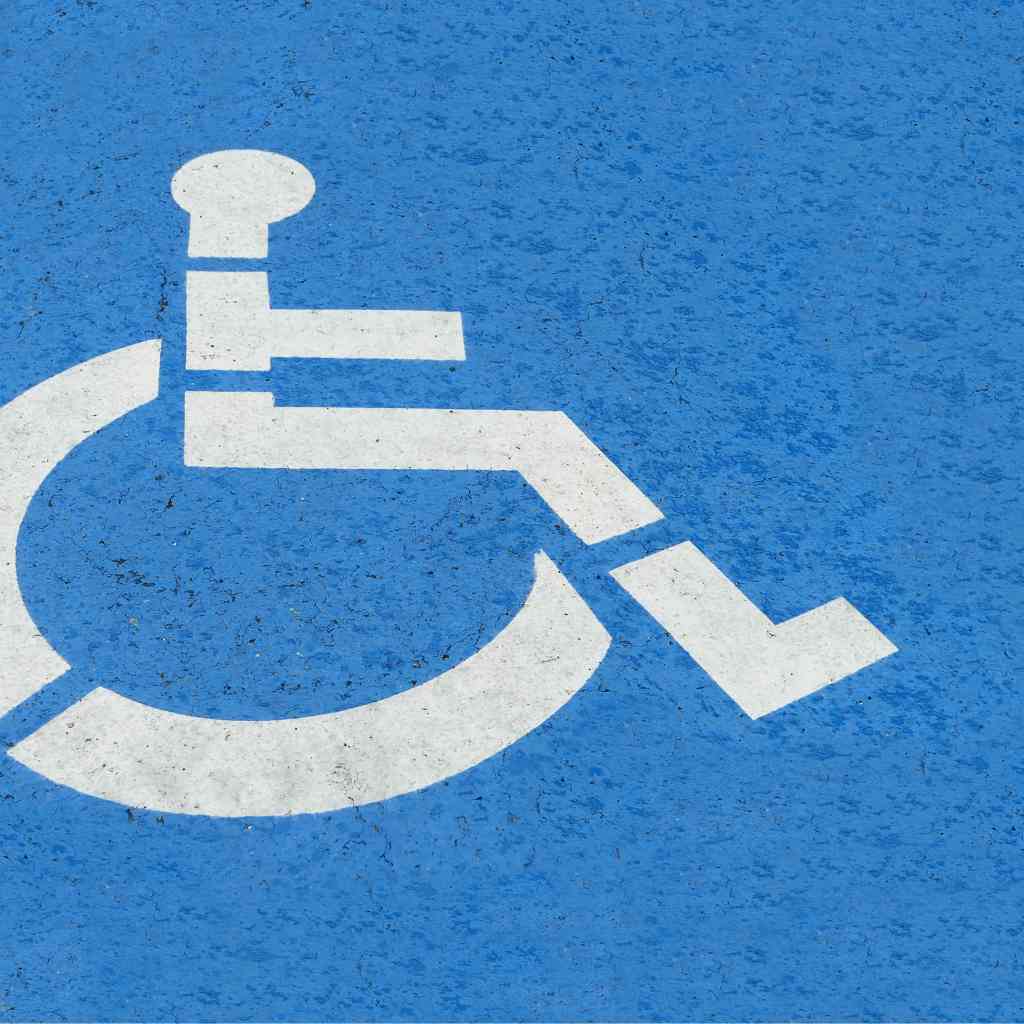
Required Sign Placement and Mounting Specs
In California, the sign must be mounted at least 60 inches above ground level measured to the bottom of the lowest sign. This height is measured from the grade or sidewalk surface, not the adjacent roadway.
The sign must be located at the front of the accessible parking stall and positioned in a way that it’s clearly visible to drivers entering the lot. It cannot be hidden behind landscaping, poles, or other vehicles. If the sign is placed on a post with other messages (like fine amounts or van access), the bottom of the lowest sign still needs to be 60 inches high.
Signs must be installed perpendicular to the parking stall, facing the driving aisle not sideways or parallel to the curb.
You cannot obstruct the sign’s view with vegetation, fencing, or building structures. Visibility is critical. If the sign can’t be seen from a vehicle approaching the space, it’s out of compliance.
Distance from Accessible Pathways
The parking space must connect to an accessible route usually a curb ramp or access aisle that leads directly to the building or facility entrance.
The sign should be installed in a way that does not block or encroach upon the access aisle or wheelchair ramp. If placed too close, it may violate the accessible route clearance width or be considered a hazard.
Signs must face approach traffic, so drivers can see them before entering the stall especially important in angled or one-way lots.
Striping and Surface Marking Alignment
The posted sign does not replace surface markings. Accessible parking stalls in California must also be marked with:
The International Symbol of Accessibility painted on the ground (at least 36 inches tall)
Blue border striping
Cross-hatched access aisles with “NO PARKING” lettering
The sign and the surface markings must correspond. Don’t paint accessible symbols without posting the required signs or vice versa. Both are required for full compliance under Title 24 and federal ADA rules.
Where exactly should the sign go in angled parking lots?
At the head of the stall, facing the driving aisle. Follow the same 60-inch height rule. Do not mount the sign off to the side.
Can you mount ADA parking signs on fences?
Yes, if and only if the fence placement meets all visibility and height requirements. If mounting on a chain-link fence, make sure the sign remains flat, legible, and is not blocked by mesh or vegetation. Measure 60 inches from the pavement directly below the sign not from the base of the fence.
CA Vehicle Code Section 22511.5 Requirements
California Vehicle Code §22511.5 mandates that all accessible parking spaces have signage that includes:
The International Symbol of Accessibility
A minimum fine warning of $250
A clear designation of the space as reserved for persons with disabilities
For van-accessible spaces, additional “Van Accessible” language
The $250 minimum fine is not optional in California. The sign must include this specific text:
“Minimum Fine $250” and it must be permanently affixed and legible.
CA Building Code Title 24 Layout Requirements
California Building Code Title 24, Section 11B-502.6 specifies the layout and placement of signage in more detail than federal ADA regulations. It requires:
The sign to be posted in front of each stall
No obstruction to visibility, even when a vehicle is parked in the space
The sign must be reflective, using retroreflective material
If multiple accessible spaces are grouped, each one must have signage unless grouped under a single, clearly visible sign with directional arrows
It also specifies minimum contrast: letters and symbols must contrast with their background for visibility in day and night conditions.
Required Tow-Away Warnings in California
Every accessible parking sign must include a tow-away warning, per California Vehicle Code §22658. This requires:
Text stating: “Unauthorized vehicles parked in designated accessible spaces not displaying distinguishing placards or license plates issued for persons with disabilities will be towed away at the owner’s expense.”
The name and phone number of the local law enforcement agency responsible for towing enforcement
This warning must be a separate sign, or included as part of the main signage, and posted adjacent to each accessible stall.
Failure to include the tow-away language can render the signage non-compliant, opening the property owner to lawsuits or citation.
Common Violations That Lead to Lawsuits or Fines
Even small signage errors can turn into major legal problems in California. CASp inspectors regularly flag these avoidable issues, and plaintiffs’ attorneys often use them as easy targets in accessibility lawsuits.
1. Mounting the Sign Too Low
Signs installed under 60 inches from ground to bottom edge fail Title 24 standards. Even a few inches short can invalidate compliance.
2. Missing the Required Fine Amount
Omitting the “Minimum Fine $250” wording violates both Vehicle Code §22511.5 and CBC 11B‑502.6. Inspectors see this constantly, especially on older lots that only display the wheelchair symbol.
3. Obstructed or Hidden Signage
When signs sit behind trees, fences, or columns, they’re considered non‑visible and non‑compliant. ADA signage must be readable from the vehicle approach lane, not only once a driver exits the car.
4. Outdated or Non‑Reflective Materials
California requires retroreflective surfaces so signs stay legible at night or in dim garages. Many older aluminum signs fade or lose reflectivity a common inspection failure.
5. Missing “Van Accessible” Label
Every one‑in‑six accessible stalls must be designated for vans. Forgetting this label, or painting the symbol on the ground without the corresponding post sign, creates a mismatch that violates Title 24.
Together, these small oversights lead to lawsuits, citations, or re‑inspection costs that far exceed the price of doing it right the first time.
Real Reddit complaint: “Our property failed inspection just because the sign was 4 inches too low. We had to remount and repaint.”
ADA Signage Requirements for Different Property Types
ADA and California Title 24 accessibility standards apply differently depending on the type of property. Here’s how signage rules break down across common lot types.
Commercial Parking Lots
Minimum Sign Count Depends on Total Accessible Stalls
Every accessible parking stall must have its own post-mounted sign. There’s no “shared” signage allowed. If a commercial lot has five accessible spaces, it needs five individual signs each meeting mounting, contrast, and language rules.
Strip Mall and Multi-Tenant Centers
If your lot serves multiple businesses (e.g., retail plazas, medical offices, business parks), the signs must clearly identify which stalls are designated and whether any are van-accessible. Signs must be readable from all approach angles, especially if the lot wraps around a building or has multiple access points.
Multi-Family Residential (Apartments, Condos)
Permanent Signage is Mandatory
Even in private or gated communities, accessible parking spaces must be marked with post-mounted signs—not just ground paint. These signs must be visible, reflective, and installed per CBC height specs.
Different Rules for Resident vs Visitor Spaces
Stalls reserved for tenants must still meet ADA signage requirements. If visitor parking is provided, accessible visitor stalls must also be signed accordingly. Signs should clarify usage (resident or visitor) if multiple categories exist.
Government or School Facilities
Additional State-Mandated Signage Rules Apply
Schools, city-owned lots, and other public facilities must follow both federal ADA rules and California’s stricter Title 24 requirements. This includes:
$250 minimum fine wording
Tow-away enforcement details if unauthorized vehicles may be removed
Bilingual signage where required (per local language demographics)
For public schools and campuses, signs must also account for student drop-off zones and bus loading areas, ensuring those spaces are not misused as parking and remain compliant with path of travel rules.
What To Do If Your Parking Signs Aren’t Compliant
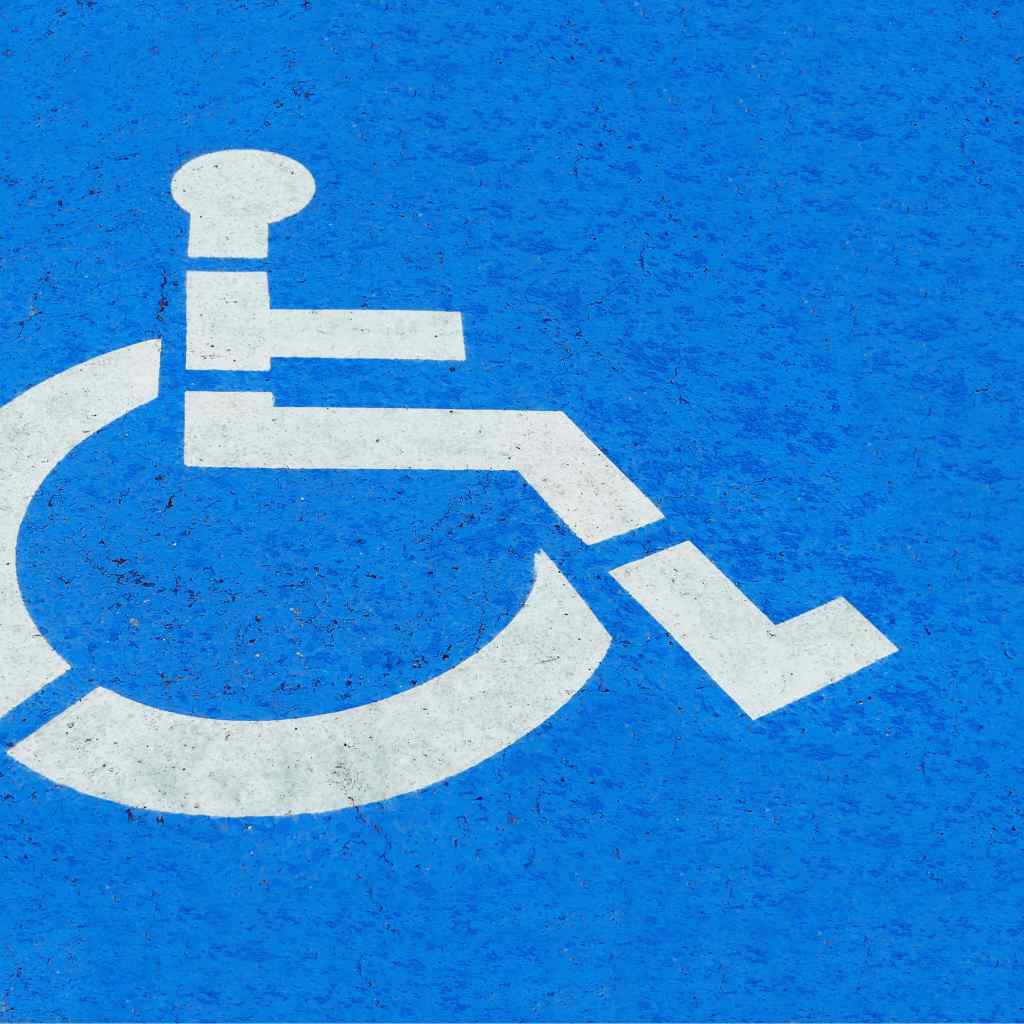
If your parking signage doesn’t meet ADA or California Title 24 standards, you’re exposed to lawsuits, fines, and failed inspections. Here’s how to fix it properly and avoid repeat violations.
1. Schedule a CASp Inspection
Start with a Certified Access Specialist (CASp) inspection. This provides an official evaluation of whether your signage meets current accessibility codes—including federal ADA, California Building Code (CBC), and CA Vehicle Code Section 22511.5. CASp reports are also a key legal defence if complaints arise.
2. Use Verified, Code-Compliant Signage Vendor
Don’t rely on generic online sign stores. Use vendors who specifically manufacture signage to California specs. Look for:
Correct minimum fine notice ($250)
Proper International Symbol of Accessibility (ISA)
Reflective background and blue/white contrast
Durable materials rated for outdoor installation
Pro tip: Ask vendors if their products are verified for CBC Title 24 compliance not just “ADA compliant” in a generic sense.
3. Re-Mount All Signs to Legal Height and Location
Even a few inches off-spec can trigger a violation. In California, signs must be:
60 inches minimum from the ground to the bottom edge
Mounted at the stall head, visible to oncoming vehicles
Free from obstruction by fences, shrubs, walls, or overhangs
For sloped lots or angled parking, verify orientation to ensure signs are readable from the driver’s perspective.
4. Replace Outdated or Non-Compliant Signage
If your signs lack the fine amount, are faded, non-reflective, or don’t show van-accessibility where required—replace them. Updating language, contrast, and materials is mandatory if your signs were installed before the most recent CBC revision (often triggered by building renovations or ownership changes).
Final Thoughts | Compliance Is Cheaper Than a Lawsuit
Fixing a sign costs a few hundred dollars. Missing one could cost you thousands.
Here’s what you need to remember:
Minimum height: 60 inches from the ground to the bottom of the sign
Visibility: Face forward, no trees, fences, or walls blocking view
Wording: Include the $250 minimum fine and van-accessible language if required
Contrast: White-on-blue with reflective background for night visibility
Mounting: Directly at the stall head, not offset or to the side
These aren’t suggestions they’re legal specs defined in CA Building Code Title 24, Vehicle Code Section 22511.5, and 2010 ADA Standards for Accessible Design.
Annual walk-throughs of your lot are smart. If anything’s shifted, damaged, or hidden by landscaping, correct it before a complaint lands. If you’re unsure what’s wrong, get a CASp report. It gives you documented proof of good faith efforts to comply—and that can shut down lawsuits from serial ADA filers before they start.
One bad inspection can trigger thousands in legal fees, damages, and required upgrades. One sign, installed right, can prevent it entirely.
Need help? Start with a compliance-focused inspection, not a guess.
